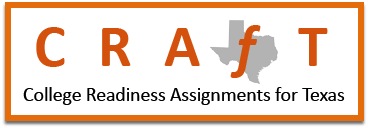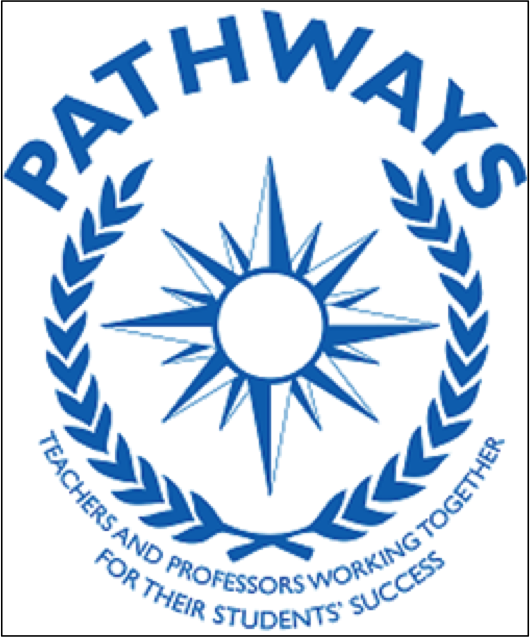II. Diverse Human Perspectives and Experiences![]()
A. Spatial analysis of physical and cultural processes that shape the human experience
1. Use the tools and concepts of geography appropriately and accurately.
a. Identify features of the Earth’s physical and cultural regions (e.g., landforms, bodies of water, linguistic patterns, hemispheric divisions).
b. Create a map from textual information to show movement of people and ideas across space and time.
c. Define the concepts of latitude and longitude and how they are used to determine location. d. Use maps and diagrams to report physical, cultural, and demographic information from a spatial perspective.
2. Analyze the interaction between human communities and the environment.
a. Compare agricultural and nomadic pastoral societies.
b. Explain the Industrial Revolution and analyze its impact on human societies and the growth of cities.
c. Examine the impact of human migration on culture and the environment.
3. Analyze how physical and cultural processes have shaped human communities over time.
a. Explain how climate has influenced human communities over time.
b. Identify barriers to human exchange (e.g., commercial, cultural, biological) in the past, explain efforts by human communities to overcome them, and analyze how these efforts have influenced historical developments.
c. Analyze how human activities (e.g., irrigation, land use policies) have altered the Earth’s physical landscape.
4. Evaluate the causes and effects of human migration patterns over time.
a. Identify and explain shifts in urban population centers over time and space.
b. Trace the influence of human migration upon domesticated plant and animal distribution over space and time.
c. Explain how technology and economic forces can influence patterns of migration and population distribution.
5. Analyze how various cultural regions have changed over time.
a. Explain the impact of borderland regions (such as those of the United States and Mexico) on human interaction and cultural development.
b. Examine how human characteristics and cultural elements (e.g., race, ethnicity, language, religion) distinguish specific regions of the world from each other in the past and present.
6. Analyze the relationship between geography and the development of human communities.
a. Explain how desert cultures might develop differently from coastal cultures or others that have ready access to water.
b. Explain how significant physical features and environmental conditions have influenced the cultural, political, and economic characteristics of selected regions in the past and present.
B. Periodization and chronological reasoning
1. Examine how and why historians divide the past into eras.
a. Describe the rationale for dividing U.S. history before and after particular dates (e.g., from 1865-1914).
b. Evaluate to what extent World War II can be described as a significant turning point in American history, examining such issues as the expansion of civil rights, the economic influences of the G. I. Bill, and the international role of the United States.
2. Identify and evaluate sources and patterns of change and continuity across time and place.
a. Examine how technology has affected culture and community (e.g., the impact of the automobile on the characteristics of cities such as Los Angeles and Houston).
b. Analyze the impact of immigration on the United States at different times in its history.
3. Analyze causes and effects of major political, economic, and social changes in U.S. and world history.
a. Examine the sources of the American Revolution and delineate the cultural and political forces that gave rise to the Declaration of Independence and the Constitution.
b. Examine how technology and ideas have been diffused from one region to another along historic trade routes and analyze their impact.
c. Examine how the discovery of oil in such countries as Saudi Arabia and Venezuela has effected economic, political, and cultural change.
C. Change and continuity of political ideologies, constitutions, and political behavior
1. Evaluate different governmental systems and functions.
a. Explain the key concepts of democracy expressed in the Declaration of Independence and how they shaped the government and culture of the United States.
b. Compare the Articles of Confederation and the U. S. Constitution and the different views of governance they represent.
c. Distinguish between different systems of government such as fascism, socialism, and Communism, and give examples of each
d. Explain differences between the governmental system of the United States and other countries (e.g., Canada, the United Kingdom, China).
2. Evaluate changes in the functions and structures of government across time.
a. Explain how major historical events such as wars and social and political movements have affected the functions and structure of governments.
b. Analyze how economic and technological developments have changed the function and structure of governments.
c. Delineate and explain several changes to the U.S. Constitution in response to political and social movements.
d. Examine the effects of U.S. court decisions on the Civil Rights Movement over the last 150 years.
e. Analyze the formation and role of key political parties in U.S. history.
f. Consider to what extent political events influence Supreme Court appointments and decisions.
3. Explain and analyze the importance of civic engagement.
a. Identify three extraordinary examples of civic responsibility in American history and evaluate their impact on American culture.
b. Explain why high levels of civic participation are essential in democratic societies.
c. Examine the emergence and impact of civil disobedience in different societies and different historical moments.
D. Change and continuity of economic systems and processes
1. Identify and evaluate the strengths and weaknesses of different economic systems.
a. Examine the role of the free enterprise system in the U.S. economy and its general impact on American culture.
b. Compare and contrast a traditional, command, and market economy and give examples of the strengths and weaknesses of each.
c. Explain the influence of mercantilism on European colonization practices and analyze its influence on the development of the American colonies.
d. Identify and evaluate examples of government intervention in the marketplace intended to address market failure.
e. Describe how the New York Stock Exchange works and the central role it plays in the U.S. economy.
2. Analyze the basic functions and structures of international economics.
a. Explain how changes in a country’s economic situation affect its foreign exchange rate and its trade relationships with other countries.
b. Analyze the impact of free trade between countries, examining not only economic effects but cultural and political ones as well.
c. Explain the functions of international economic organizations such as the World Bank, the International Monetary Fund, and the World Trade Organization.
E. Change and continuity of social groups, civic organizations, institutions, and their interaction
1. Identify different social groups (e.g., clubs, religious organizations) and examine how they form and how and why they sustain themselves.
a. Identify at least three social groups or civic organizations in your community and analyze the role they play in shaping social relations, public values, and personal identity.
2. Define the concept of socialization and analyze the role socialization plays in human development and behavior.
a. Identify the major agents of socialization and how they influence individual identity.
b. Analyze how popular culture (e.g., film, television, music) shape public attitudes.
3. Analyze how social institutions (e.g., marriage, family, churches, schools) function and meet the needs of society.
a. Analyze how American universities have played a central role in the formation of American culture and character.
b. Compare and contrast the present-day functions of religious institutions in the United States with those in other parts of the world.
c. Compare and contrast the r ole of the family in different cultures.
4. Identify and evaluate the sources and consequences of social conflict.
a. Identify and analyze how different religious values have led to social conflict in different regions of the world.
b. Explain how modern governments have attempted to reduce social conflict and evaluate the effectiveness of these efforts.
F. Problem-solving and decision-making skills
1. Use a variety of research and analytical tools to explore questions or issues thoroughly and fairly.
a. Design a research project that analyzes various points of view on a current controversial issue, such as global climate change.
b. Use both primary and secondary sources to develop a group presentation that analyzes the causes of the U.S. Civil War from the perspectives of residents of both the North and the South.
c. Use both primary and secondary sources to analyze the actions of Abraham Lincoln to end the Civil War and restore national unity.
d. Collect and present visual images (e.g., photographs, paintings, illustrations) that trace shifting attitudes toward women in American culture and analyze changes.
e. Use maps and graphs to compare levels of economic development and standards of living in various countries and suggest reasons for any disparities.
2. Analyze ethical issues in historical, cultural, and social contexts.
a. Examine changes over time in American ethical conventions regarding the expression of views on race, ethnicity, and gender.
b. Identify and evaluate ethical guidelines in professional circumstances such as the practice of law and medical research.
c. Evaluate how science and technology have raised concerns about ethical issues, such as the right of privacy.
d. Identify either a national organization or an institution that seeks to promote ethical behavior, and analyze its success and impact.


 Show Printable Version
Show Printable Version




